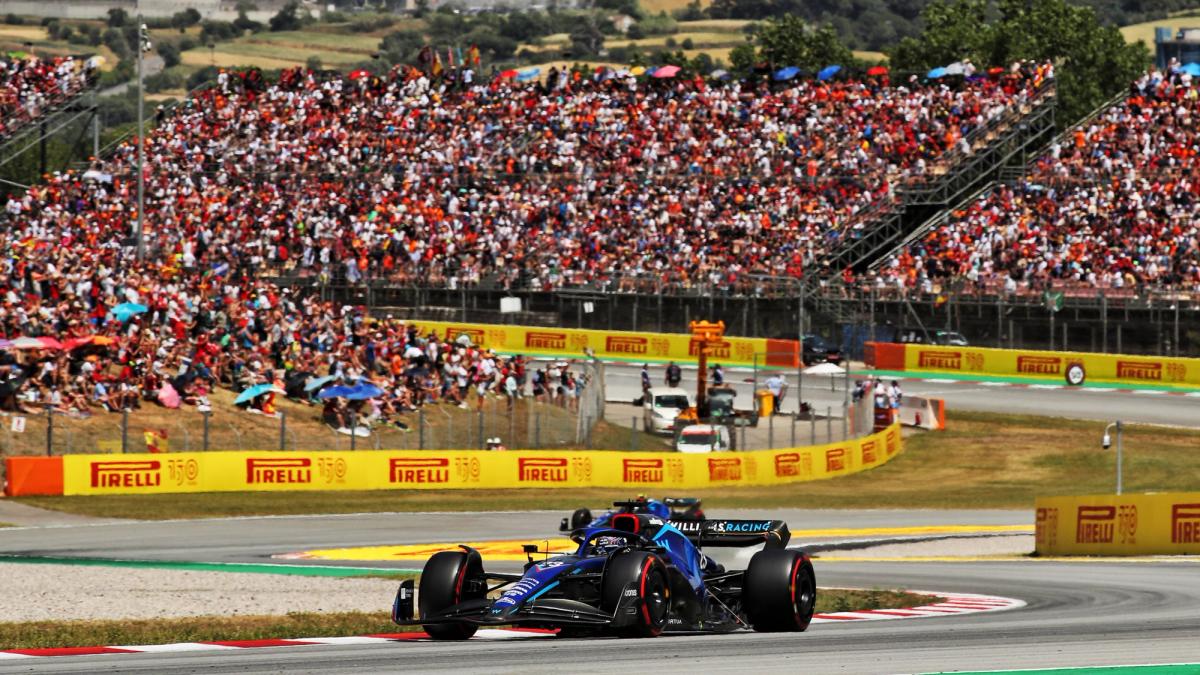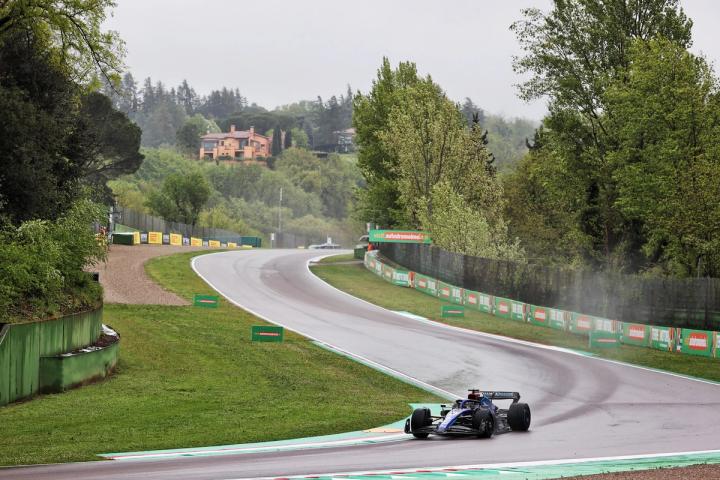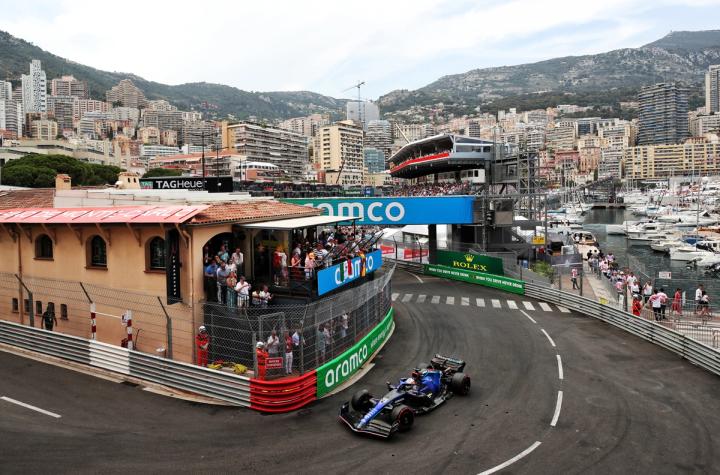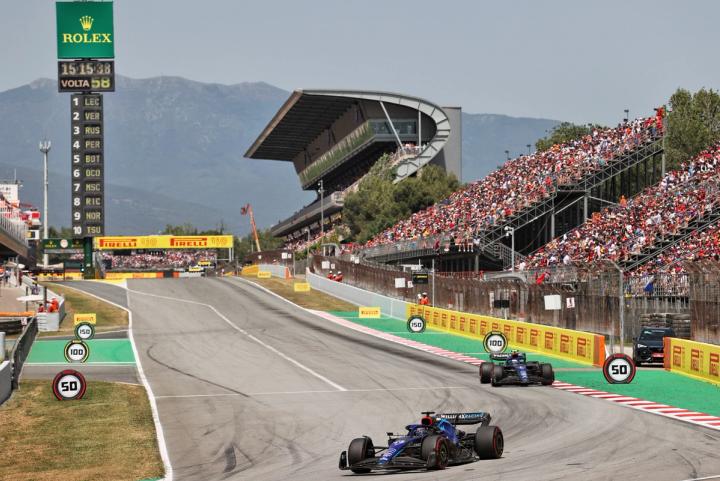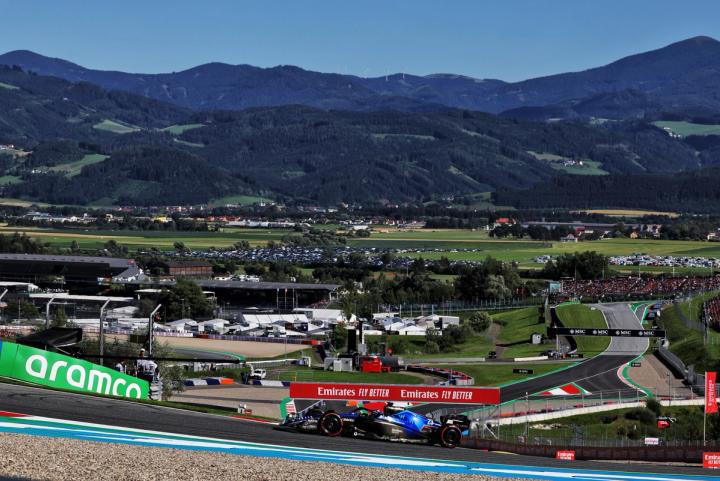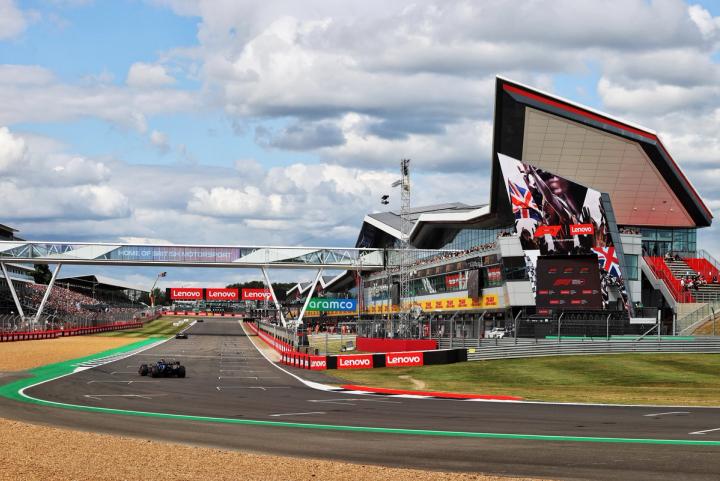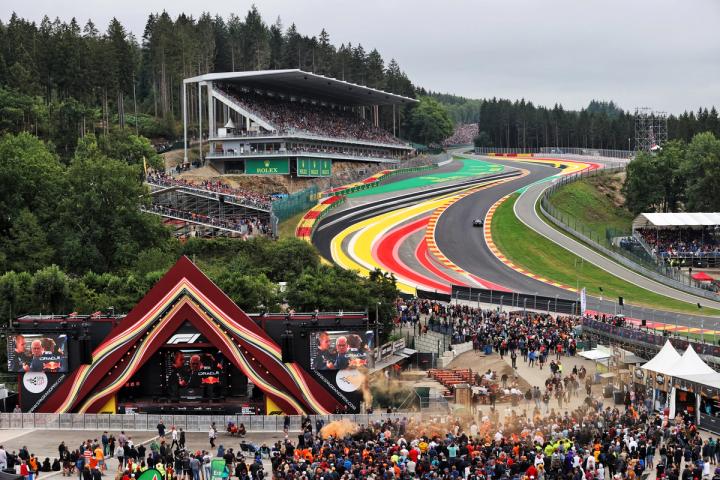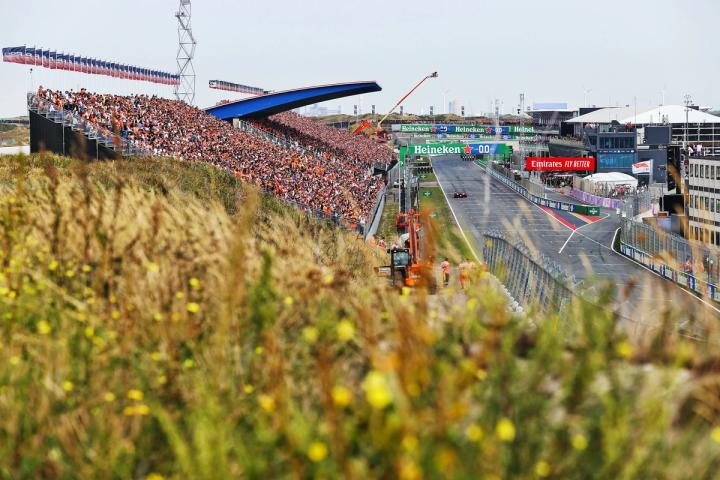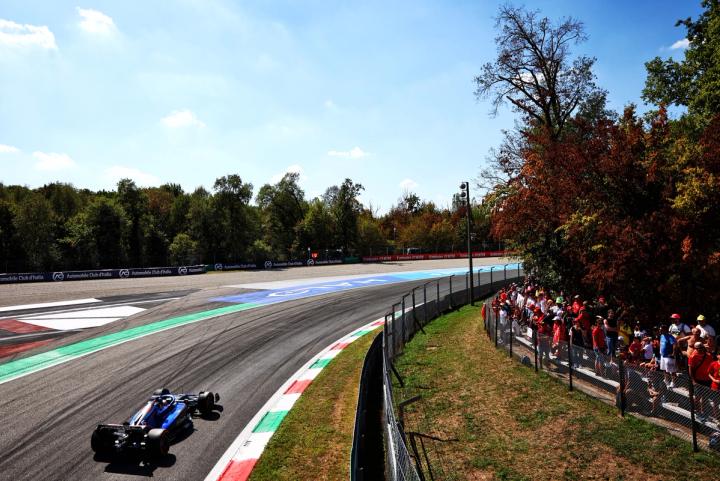Formula 1 is heading for its historical homeland as we approach what is going to be a busy few months for everyone involved in the sport.
The European leg of the season is here, with all of the upcoming venues having a firm foundation in the history of F1.
Each of the nine European circuits on the 2023 calendar feature in the top 12 list of tracks to hold the most grands prix, four of which featured in the sport's inaugural season back in 1950.
If we turn the clock back 25 years, 11 of the 16 races in the 1998 season were held in Europe. Nowadays, just nine of the 23 scheduled grands prix are situated on this continent, such is the worldwide appeal and demand for more races across the globe.
If the garages at these upcoming circuits could talk, they’d certainly have plenty of stories to tell.
Join us as we dive deeper into the nine classic tracks that are ahead of us this summer.
Imola
Alex Albon enters the Acque Minerali complex
Of course, we had been due to kickstart this run of European races in Imola, with the team already set up for the weekend when the decision was made to not proceed with the weekend as planned.
Our thoughts remain with the people of Emilia-Romagna at this time.
The Autodromo Enzo e Dino Ferrari is a special circuit – a qualifying lap here is truly a sight to behold.
F1 cars first raced on this parkland track in non-championship rounds in the sixties, with the first point-awarding race coming when it hosted the 1980 Italian Grand Prix instead of Monza.
From 1981 to 2006, F1 racing would continue at Imola under the title of the San Marino Grand Prix, named after the microstate located 75 km southeast.
The famous turns of Piratella, Acque Minerali and Rivazza returned to the calendar in 2020 and will feature until at least 2025.
Williams Racing wins at Imola: 8 (Mansell ‘87, Patrese ‘90, Mansell ‘92, Prost ‘93, Hill ‘95, Hill ‘96, Frentzen ‘97, R. Schumacher ‘01)
Monaco
La Rascasse is unmistakably Monaco
When you think of Formula 1, you think of Monaco – the two go hand in hand.
F1’s Crown Jewel might not provide some of the best on-track action you’ll see all season, but it still remains the same stunning spectacle it was when racing first began on these streets in 1929.
The principality hosted F1’s second-ever race in its 1950 championship debut and the layout remains largely the same to this day.
It’s a challenge every driver on the grid adores as they thread the eye of a needle at average speeds of around 150km/h.
Every millimetre counts around F1’s shortest and narrowest circuit, which also claims the slowest corner of the entire year – the Hotel Hairpin is navigated at 45km/h.
Williams Racing wins in Monaco: 3 (Reutemann ‘80, K. Rosberg ‘83, Montoya ‘03)
Barcelona
The Circuit de Barcelona-Catalunya boasts a 1km long main straight
The Circuit de Barcelona-Catalunya is a venue that every driver on the grid knows like the back of their hand thanks to the hours and hours of testing laps they would have done here throughout the junior and senior formula categories.
It hosted its first Grand Prix in 1991 and hasn’t been missing on the calendar since. We certainly enjoyed the switch in the early-90s from Jerez to Barcelona, winning each of the first four races held here.
It’s also the location of our most recent race victory when Pastor Maldonado shocked the world to stand on the top step in 2012.
For 2023, the final sector’s chicane has been removed which sees a welcome return to the older, faster layout.
After Spain, we head to our only non-European race of the summer at the Canadian Grand Prix.
Williams Racing wins in Barcelona: 6 (Mansell ‘91, Mansell ‘92, Prost ‘93, Hill ‘94, Villeneuve ‘97, Maldonado ‘12)
Make it yours
Customise your very-own Driver Card! Pick your own helmet and number to display your Williams Racing fandom to the world!
Spielberg
The Styrian hills make for a dramatic backdrop in Austria
Austria’s Red Bull Ring might be the fourth-shortest circuit of the season, but it has the quickest overall lap time of the year, with 2022’s pole time coming in at just under 65 seconds.
All that means the fans watching on at this spectacular Styrian countryside circuit get to see the cars pass 71 times in total.
The original Osterreichring opened in 1969 but was purchased by the Austrian energy drink brand and reopened in 2011.
Williams Racing wins in Spielberg: 3 (Jones ‘79, Mansell ‘87, Villeneuve ‘97)
Silverstone
Silverstone shines in the British GP sunshine
The home of Formula 1’s first-ever grand prix, Silverstone is the iconic home of the British Grand Prix.
Built on a former RAF airfield, little did they know in the 1940s that what they were constructing would become one of the planet’s most famous circuits.
Silverstone is one of the fastest circuits of the year and boasts corners such as Copse, Maggots, Becketts and Stowe – some of the greatest places to watch a modern F1 car do its thing.
Drivers love it, fans love it and so do we!
Williams Racing wins in Silverstone: 8 (Regazzoni ‘79, Mansell ‘87, Mansell ‘91, Mansell ‘92, Prost ‘93, Hill ‘94, Villeneuve ‘96, Villeneuve ‘97)
Shop our Caps
See More
Budapest
The Hungaroring is set within a natural bowl
Billed as F1’s first race behind the Iron Curtain when it made its debut in 1986, few could have imagined back then how popular this race would go on to become.
The Hungaroring has been an ever-present venue since then and has laid claim to plenty of memorable moments down the years, including Nigel Mansell’s 1992 championship victory.
Known as ‘Monaco without the walls’, it’s a tight and winding circuit just to the north of the Hungarian capital.
It’s also one of the most affordable grand prix weekends of the year.
Williams Racing wins in Budapest: 7 (Piquet ‘86, Piquet ‘87, Boutsen ‘90, Hill ‘93, Hill ‘95, Villeneuve ‘96, Villeneuve ‘97)
Spa-Francorchamps
Spa-Francorchamps impressive Eau Rouge and Raidillon section
The Belgian Grand Prix has been run at three different tracks over the years, but it’s the incredible Circuit de Spa-Francorchamps that has held the majority and it’s clear to see why.
Comfortably the longest circuit we race at, the 7km venue used to cover double the length, speeding through nearby towns and villages.
It also has one of the most famous corner sequences on the planet, including the mammoth climb up through Eau Rouge and Raidillon.
Currently, this is the final race planned at this venue, with a one-year contract extension triggered in 2022.
Williams Racing wins in Spa-Francorchamps: 3 (Mansell ‘86, Hill ‘93, Hill ‘94)
Zandvoort
The Zandvoort circuit is built into sand dunes
The first race back after the summer break sees us head to the beach and the Dutch resort town of Zandvoort.
Built on the dunes, drivers have no time to rest as they’re always working at the wheel around this twisting, undulating venue.
The Dutch GP returned to the calendar in 2021 after a 35-year absence following a spike in the popularity of the sport in The Netherlands… we wonder why that could be?!
Williams Racing wins in Zandvoort: 1 (Jones ‘79)
Use code 'AprilBestSeller' for 10% off our Presentation Jacket
Monza
The Temple of Speed completes F1's European tour
F1’s summer road trip ends where it started, back in Italy.
Fittingly, Monza has hosted the most grands prix of any circuit in the sport, totalling 72. It has only not featured in one F1 season, the aforementioned 1980 campaign when the Italian GP switched to Imola.
Known as the Temple of Speed, it lays claim to having the highest average speed of the season – roughly 250 km/h.
The 1971 Italian GP saw the sport's closest-ever finish when Peter Gethin took victory ahead of Ronnie Peterson by just 0.01 seconds, with the top five finishers separated by just 0.61 seconds.
Williams Racing wins in Monza: Piquet ‘86, Piquet ‘87, Mansell ‘91, Hill ‘93, Hill ‘94, Montoya ‘01)
Related Tags:
Powered By
© the Williams Group, under licence to Williams IP Holdings LLC
Powered By
Williams Grand Prix Engineering Services LLP, a limited liability partnership registered in England and Wales with company registration number OC456938 and whose registered address is at Station Road, Grove, Wantage, Oxfordshire, OX12 0DQ.
